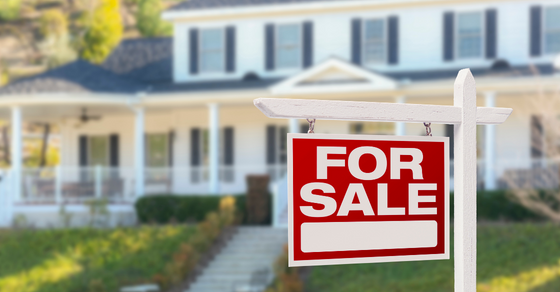
If you’re thinking about selling your home, it’s important to determine whether you qualify for the home sale gain exclusion. The exclusion is one of the most generous tax breaks in the tax code, so be sure to review its requirements before you sell.
Ordinarily, when you sell real estate or other capital assets that you’ve owned for more than one year, your profit is taxable at long-term capital gains rates of 15% or 20%, depending on your tax bracket. High-income taxpayers may also be subject to an additional 3.8% net investment income (NII) tax. If you’re selling your principal residence, however, the home sale gain exclusion may allow you to avoid tax on up to $250,000 in profit for single filers and up to $500,000 for married couples filing jointly.
Don’t assume that you’re eligible for this tax break just because you’re selling your principal residence. If you’re a single filer, to qualify for the exclusion, you must have owned and used the home as your principal residence for at least 24 months of the five-year period ending on the sale date.
If you’re married filing jointly, then both you and your spouse must have lived in the home as your principal residence for 24 months of the preceding five years and at least one of you must have owned it for 24 months of the preceding five years. Special eligibility rules apply to people who become unable to care for themselves, couples who divorce or separate, military personnel, and widowed taxpayers.
You can’t use the exclusion more than once in a two-year period, even if you otherwise meet the requirements. Also, if you convert an ineligible residence into a principal residence and live in it for 24 months or more, only a portion of your gain will qualify for the exclusion.
For example, John is single and has owned a home for five years, using it as a vacation home for the first three years and as his principal residence for the last two. If he sells the home for a $300,000 gain, only 40% of his gain ($120,000) qualifies for the exclusion, and the remaining $180,000 is taxable. (Note: Nonqualified use prior to 2009 doesn’t reduce the exclusion).
What if you sell your home before you meet the 24-month threshold due to a work- or health-related move, or certain other unforeseen circumstances? You may qualify for a partial exclusion.
For example, Paul and Linda bought a home in California for $1 million. One year later, Paul’s employer transferred him to its New York office, so the couple sold the home for $1.2 million. Paul and Linda didn’t meet the 24-month threshold but, because they sold the home due to a work-related move, they qualified for a partial exclusion of 12 months/24 months, or 50%.
Note that the 50% reduction applied to the exclusion, not to the couple’s gain. Thus, their exclusion was reduced to 50% of $500,000, or $250,000, which shielded their entire $200,000 gain from tax.
Before you sell your principal residence, determine the amount of your home sale gain exclusion and your expected gain (selling price less adjusted cost basis). Keep in mind that your cost basis is increased by the cost of certain improvements and other expenses, which in turn reduces your gain. Also, be aware that capital gains attributable to depreciation deductions (for a home office, for example) will be taxable regardless of the home sale gain exclusion.
© 2022
Receive Free financial tips & Tax Alerts!
"*" indicates required fields
Businesses usually want to delay recognition of taxable income into future years and accelerate deductions into the current year. But when is it wise to do the opposite? And why…
Navigating the realm of capital gains and optimizing tax outcomes require strategic thinking and informed decision-making. Understanding and employing effective capital gains tax strategies is crucial for businesses contemplating asset…
If your business doesn’t already have a retirement plan, it might be a good time to take the plunge. Current retirement plan rules allow for significant tax-deductible contributions. For example,…